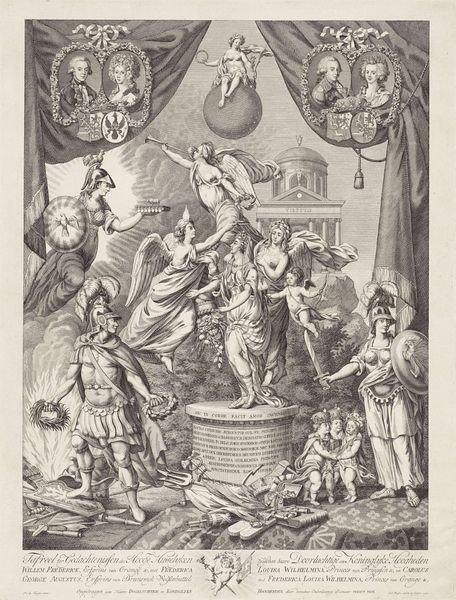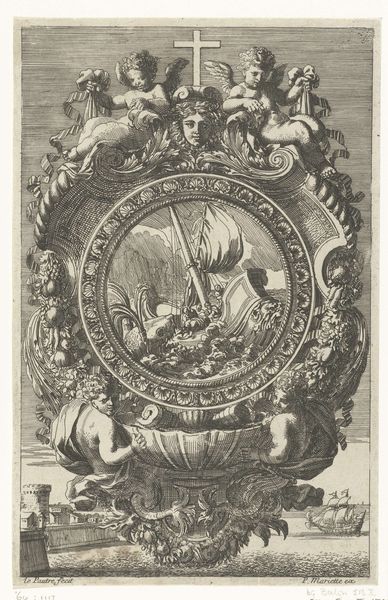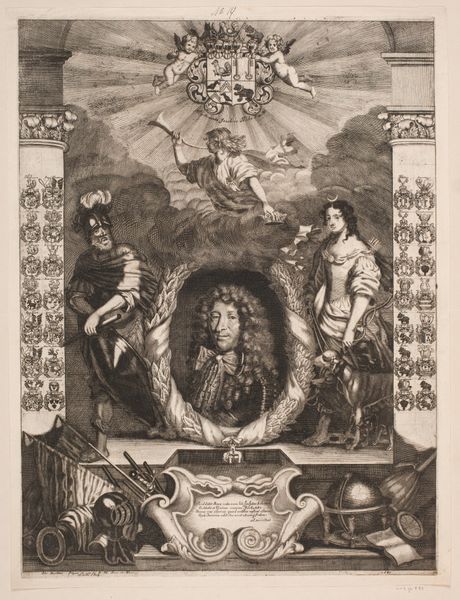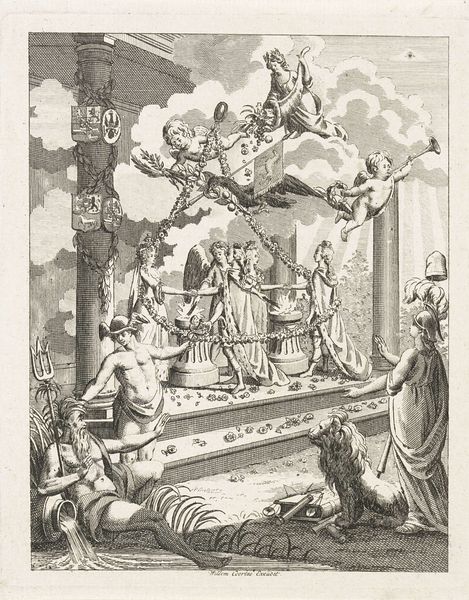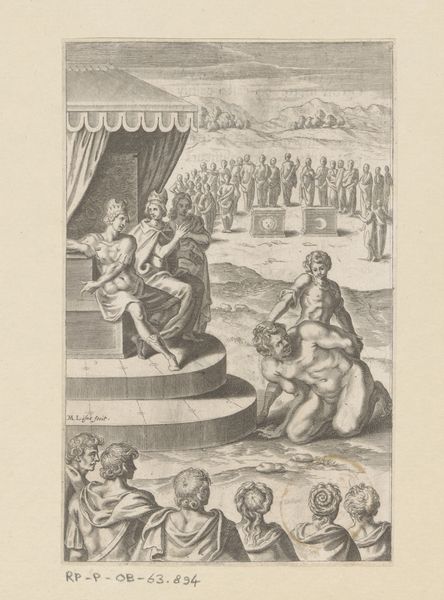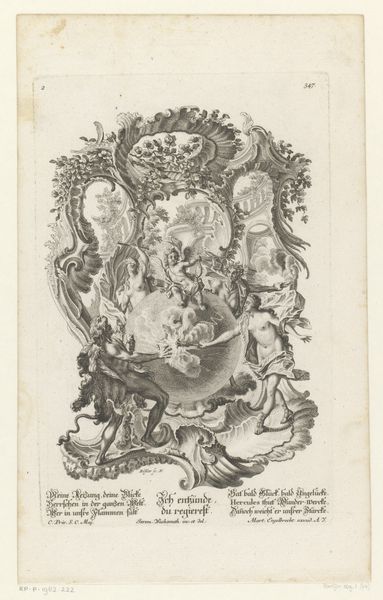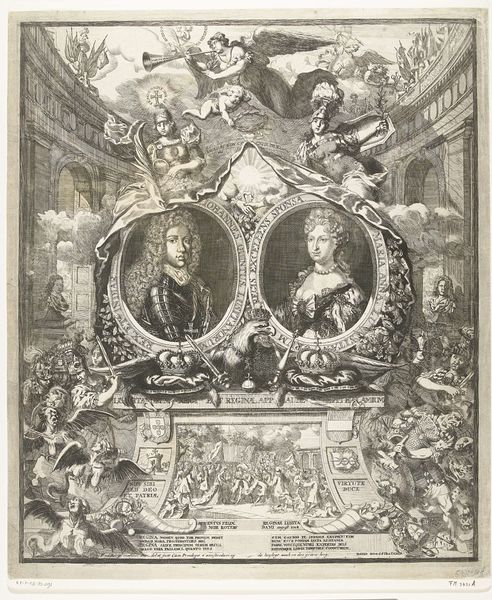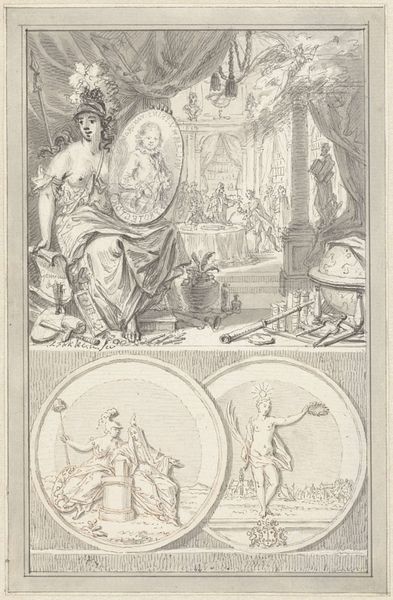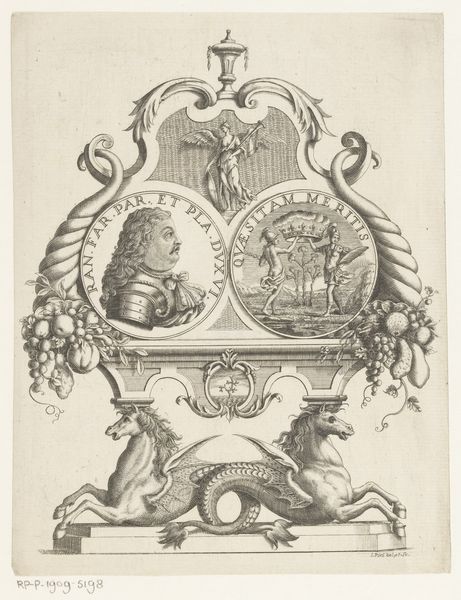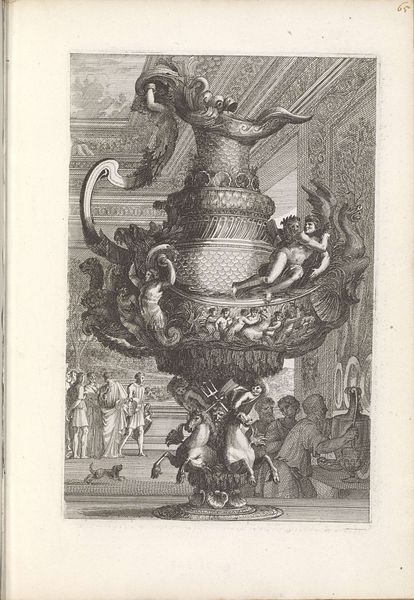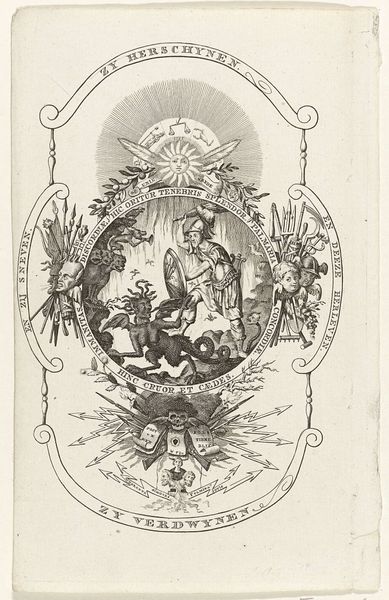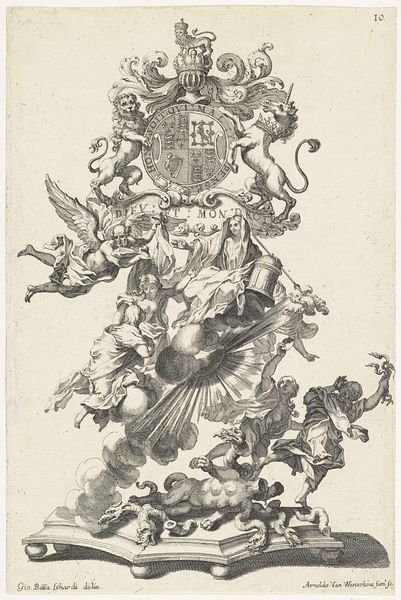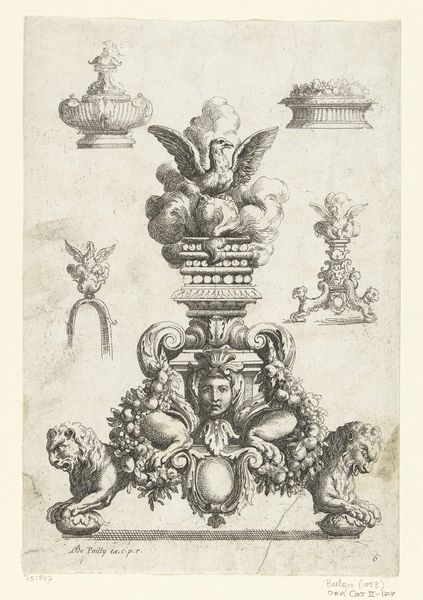
print, engraving
#
portrait
#
allegory
#
baroque
# print
#
history-painting
#
engraving
Dimensions: height 385 mm, width 261 mm
Copyright: Rijks Museum: Open Domain
Editor: Here we have "Portret van Frans III Stefanus en Maria Theresia," a Baroque print, dated between 1737 and 1745, by Jean Henri van Schawberg. The portrait seems to float amidst clouds with allegorical figures surrounding the couple; there's so much symbolism here. How do you interpret this work? Curator: Well, seeing this engraving through a historical lens, it's interesting to consider how such a piece functioned politically. It is not simply a portrait. These were produced for circulation. The Hapsburgs were strategic in creating visual narratives of power. Look at how Maria Theresa is explicitly named Queen of Hungary – this emphasizes legitimacy amidst the complex succession following the Pragmatic Sanction. What message do you think the inclusion of allegorical figures sends to its 18th-century audience? Editor: It feels like a statement about the strength and divinely ordained nature of their rule. The angels and armour, plus the sheer abundance of detail, all feel very deliberate in conveying power. Curator: Precisely. This also shows the institution of art shaping perceptions of power, doesn't it? Who are their audiences and how does it serve as propaganda for their royal status in a way photography might do today? The print allowed for broader dissemination of the image and these symbols, influencing public perception of the royal couple and bolstering their political position. Consider, also, the very act of creating and distributing these prints. What do they tell us about the printing industry and the court's resources? Editor: It's incredible how a seemingly simple portrait can reveal so much about the political climate and power dynamics of the time! Thanks to that wider lens, it feels far less simple. Curator: Exactly! Understanding the socio-political function really changes how we view even seemingly straightforward imagery.
Comments
No comments
Be the first to comment and join the conversation on the ultimate creative platform.

